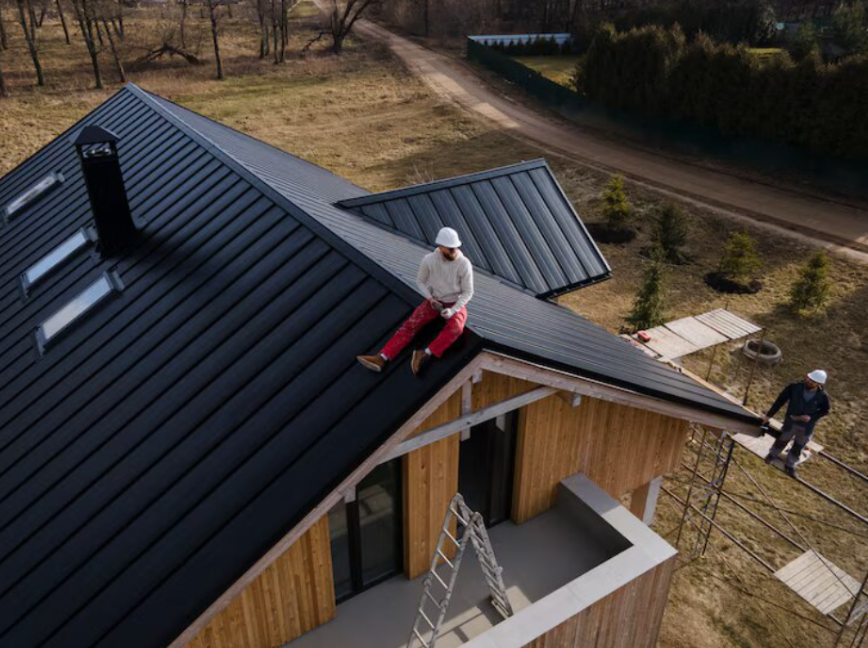
A Comprehensive Guide to the Different Types of Guttering
Gutters are an essential aspect of your property as they keep rainwater away from the walls and foundation, preventing the accumulation of water on the roof and structural damage over time. Without gutters, rainwater can run down the walls, leading to dampness, timber rot, and mould growth. So, it is important to know about the different types of guttering based on the material and profile, weigh their pros and cons, and then choose the one that fits your needs and budget. In this write-up, we will look at the different guttering materials available.
Options in Gutter Material
Broadly, metal and plastic are the two types of guttering in the UK, and both need proper installation and maintenance. Let’s explore them in detail:
PVC or Plastic Guttering
Plastic gutters are easier on the pocket compared to metal ones but durable enough. They don’t lose shape easily, are quite flexible, and come in various colours. Hence, you can easily pick what goes best with your house. Moreover, the components of PVC guttering have a push or snap-fit design, which makes it easy to connect an entire system or replace damaged parts quickly.
However, among the different types of gutter materials, PVC is more likely to be damaged by UV rays and eventually become brittle. When exposed to severe frost, plastic gutters might also crack. There is a risk of damage even when ladders are set up against them for maintenance.
Metal Guttering
You will find different types of guttering based on the type of metal used. Usually, metal gutters are stronger than PVC ones and resistant to UV rays and harsh weather. They don’t usually get damaged during maintenance either. Different types of metal gutterings are:
Cast Iron
If installed and maintained carefully, cast iron gutters can last for over a century if installed and maintained carefully. Often used in heritage buildings, they can also be customised to suit other building types and design styles. The downside is that cast iron gutters are expensive to install and repair. Moreover, they are heavy, requiring more labour and scaffolding for installation. To prolong their longevity, you must coat them with bituminous paint every five years.
Galvanised Steel
Among the different types of guttering metals, galvanised steel combines the light weight of plastic with the robustness of cast iron. Besides being the most cost-effective option, galvanised steel can withstand weather changes as it is resistant to thermal contraction and expansion and maintains the integrity of joints. You can leave it unpainted for a trendy look. In coastal areas, though, galvanised steel gutters must be coated with a magnesium zinc alloy and paint to prevent corrosion. They must also be cleaned of debris and maintained regularly. Moreover, a special paint must be used on galvanised steel, as otherwise it will start peeling.
Stainless Steel
One of the best types of guttering systems uses stainless steel as the material is resistant to rust and lasts longer than galvanised steel. Stainless steel gutters also stay shiny and look good for years. However, guttering made of stainless steel is significantly heavier than galvanised steel, slightly more challenging to handle, and a bit expensive.
Aluminium
Lightweight and sturdy, aluminium gutters aren’t vulnerable to rust, can be easily installed, and last for more than 25 years. They can also be painted or powder-coated in various colours to match your building. On the flip side, aluminium gutters are expensive and easier to dent than steel or cast iron. This means heavy hailstones or thick tree branches falling on them can damage the gutters. You also have to paint them once every 10 years.
Zinc
If you are looking for types of gutter materials that are resistant to UV rays and corrosion, zinc is a suitable option. A protective patina is formed over the metal as the years go by, which makes it durable and weather-safe. The disadvantage of zinc gutters is that they are not too cost-effective. Also, in coastal areas, zinc can stain when exposed to salty air.
Copper
Copper gutters are sustainable and go well with all kinds of buildings. Due to oxidation, their colour changes from brown to bronze to greenish blue over time. This patina protects the metal against corrosion and prevents the growth of fungus and algae. Copper requires minimal maintenance but lasts for a century or more. You just need to remove debris periodically from them. However, copper guttering is extremely expensive, and you cannot maintain the metal’s brand-new shine without removing the protective patina.
Options in Gutter Profile
From traditional to contemporary, you will find different types of guttering profiles or shapes in the market today. Let’s look closely at them:
Half-Round
These gutters are widely recognised and have been used for ages. Half-round gutters have a uniform profile and smooth curves that allow water to run off the roof easily. They come in all possible materials and are an economical, efficient choice for standard roofs. The issue with this profile is that half-round gutters clog up quickly with debris and dry leaves unless you install leaf guards. As they are not too deep, these gutters need regular maintenance and might overflow if it rains heavily.
Square or Box
Box gutters are ideal for modern buildings with sharp angles. They offer a deeper channel than half-round versions and can handle heavier water flow. However, square gutters might leak more than other types of guttering, depending on how they are constructed. So, you need to install and maintain them correctly.
Deep
Owing to a deeper channel than the half-round versions, deep gutters are apt for heavy rainfall. This deep guttering style is also suitable for steep or large roofs.
K-Style or Ogee Looking for decorative types of guttering? K-Style or Ogee (Old Gothic) can do the trick. They first attained popularity during the Victorian era and are perfect if you want to revive the 19th-century look of your property. Owing to its double-curved front, debris and water tend to get trapped in the inner angles of this type of guttering. Hence, cleaning can be a challenge.
Conclusion
Now that you know the different types of guttering in the UK, assess your needs, personal preferences, and budget before making a decision. Consider the distinct weather of the place you live in, how much maintenance you can shoulder, and the overall look you want for your property. Account for the size and slope of your roof and whether you are investing for the long or short term. Last but not least, contact a reliable and experienced company like Fast Roofing for further guidance and to ensure the smooth, efficient installation or replacement of your gutters.
